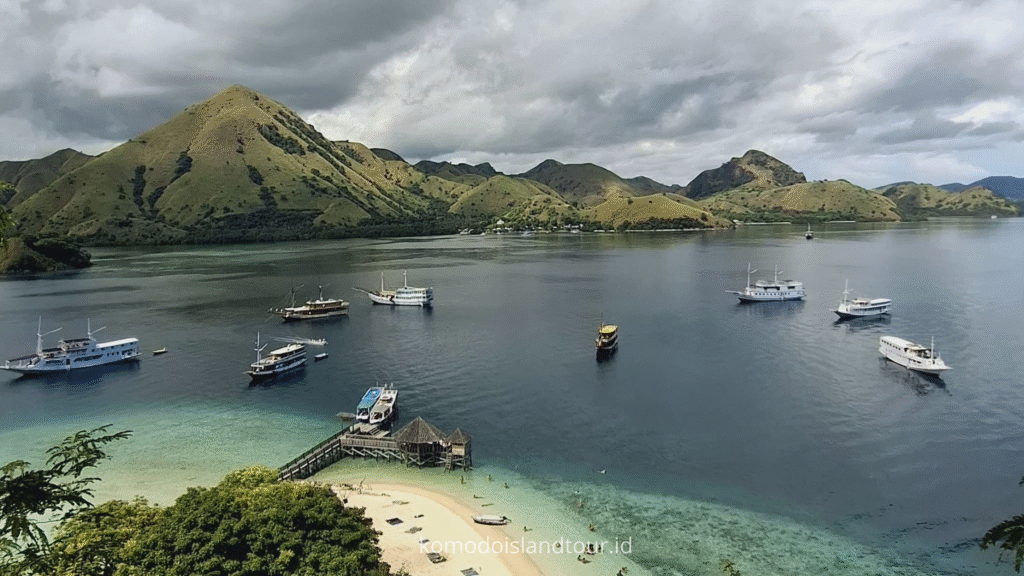Introduction
Komodo National Park is often portrayed as a tropical paradise inhabited by ancient dragons, surrounded by turquoise seas and untouched islands whose beauty is irresistible to any nature lover. While all of that is true, there are countless small details that are rarely discussed by travelers. For first-time visitors who have never set foot on Komodo Island, it’s essential to be aware of these often-overlooked, yet significant, realities.
You may be thinking about posting that perfect photo on Pink Beach or capturing a stunning video atop Padar Island—but before you experience the beauty, there are challenges you must face. Don’t expect a trip like the ones you’ve had in Bali or Thailand. What awaits you here is true wilderness. So if you’re a first-time traveler planning to explore Komodo National Park, read this article carefully—so you won’t be caught off guard once you arrive.

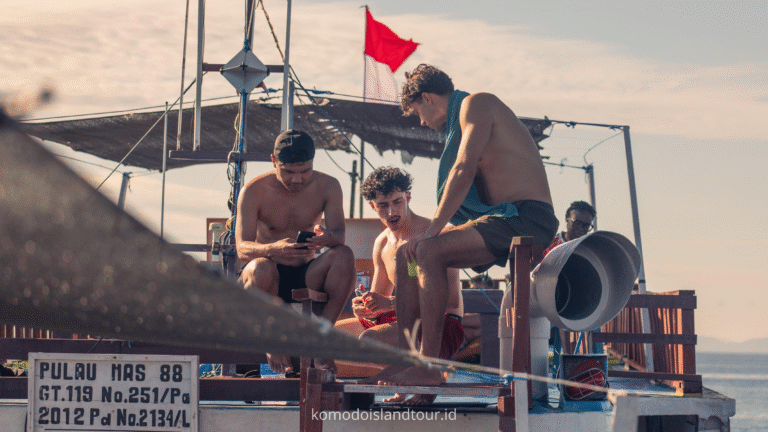
Choosing the Right Base: Labuan Bajo vs Multi-Day Trip from Lombok
Komodo National Park is one of the must-visit travel destinations when you’re in Indonesia. When planning your trip to the park, the first thing you need to consider is: From where do you want to start your island exploration?
There are two popular options commonly chosen by travelers—starting from Labuan Bajo or departing from Lombok.
So, what are the differences between the two routes? And which one is the better fit for you?
Let’s break it down.
Why Most Travelers Start from Labuan Bajo
Labuan Bajo, a small port town on the western tip of Flores Island, serves as the main gateway to Komodo National Park—and for good reason. Its accessibility is a major advantage, with regular direct flights connecting it to major cities like Bali and Jakarta. This makes it easy for travelers to reach the town and begin their adventure without long or complicated travel. Labuan Bajo is well-equipped for tourism, offering a wide range of accommodations—from budget-friendly hostels to luxury resorts—catering to different preferences and budgets. The town is also filled with licensed tour operators, dive shops, restaurants, and other traveler-friendly facilities that make it easy to organize daily excursions or multi-day liveaboard trips. Beyond convenience, Labuan Bajo offers a rich local experience where visitors can enjoy the unique culture, cuisine, and warm hospitality of the local community. All of this makes it clear why most travelers choose Labuan Bajo as their starting point for exploring the wonders of Komodo National Park.

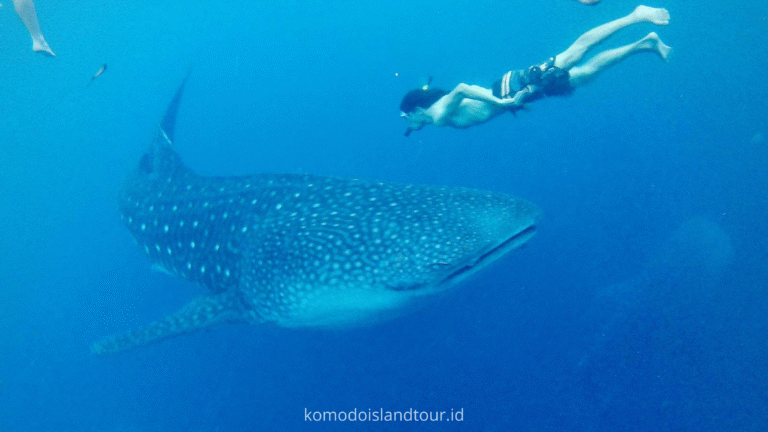
Considering a Trip from Lombok
On the flip side, embarking on a multi-day trip from Lombok offers a different and more adventurous outlook. This route typically involves a 4 Days and 3 Nights sailing expedition from Lombok to Labuan Bajo, with stops at places like Sumbawa, Kenawa Island, and Saleh Bay—where travelers may even have the chance to swim with whale sharks. The journey itself can be a major highlight, taking you through stunning seascapes and a variety of islands, allowing for a deeper immersion in the region’s natural beauty. Travelers who choose this route often seek a more raw and off-the-beaten-path experience. However, it’s important to note that the logistics are more complex, often involving ferry transfers and requiring careful planning and time management. Facilities on these boats tend to be basic, and sea conditions can sometimes be rough. While accommodation options are more limited than in Labuan Bajo, this option may appeal to those seeking solitude and a break from mainstream tourism.
In summary, both options have their own merits. Labuan Bajo provides convenience and vibrant local culture, while a multi-day trip from Lombok can offer a deeper connection to the pristine nature of the surrounding islands. Consider your priorities—be it accessibility or adventure—when making your choice for exploring the wonders of Komodo National Park.
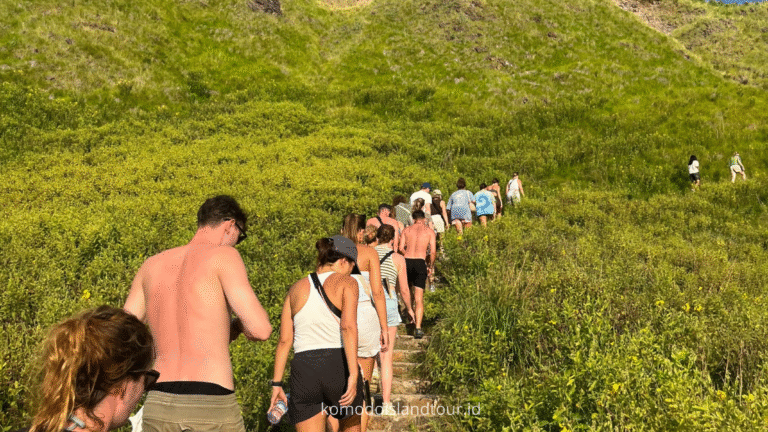
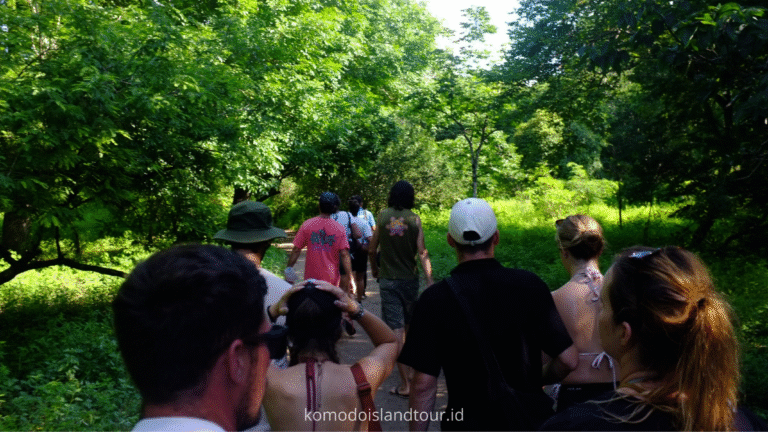
Hidden Challenges in Komodo National Park
While Komodo National Park is celebrated for its stunning landscapes and rare wildlife, many first-time visitors are surprised by the practical challenges that come with exploring this remote region. The park’s intense tropical heat can quickly become overwhelming, especially during midday treks. Without adequate hydration, sun protection, and rest, visitors may risk heat exhaustion. Additionally, basic facilities such as restrooms and trash bins are virtually nonexistent in many parts of the park, requiring travelers to plan ahead and carry essential items like biodegradable wipes and their own trash bags. The terrain also poses its own difficulties—many trails are steep, rocky, and uneven, demanding proper footwear, physical fitness, and caution. Shade is scarce on most paths, making sun exposure a constant concern. These factors don’t take away from the magic of Komodo, but they do require respect, preparation, and the right mindset to fully enjoy the experience. With thoughtful planning, you can overcome these challenges and focus on the unforgettable moments the park has to offer.
Yes, the Scenery is Stunning But Nature Can Be Harsh
The scenery in Komodo National Park is undeniably breathtaking pink beaches, crystal-clear lagoons, and dramatic island views often dominate online images. However, what these photos rarely show is the harshness of the environment: the intense heat, lack of natural shade, and long, challenging hiking trails. Most of the islands in the park are arid and barren, with temperatures during the dry season often soaring above 35°C.
Exploring the park can be thrilling, but it also presents hidden challenges that require proper preparation. The tropical heat is one of the main obstacles, making outdoor activities potentially uncomfortable and even dangerous if precautions aren’t taken. It is strongly recommended to wear lightweight, moisture wicking clothing and to carry plenty of water to stay hydrated throughout your journey. Regular breaks in shaded areas when available are crucial to maintaining your body temperature and ensuring a safe and enjoyable experience.
The rugged and varied terrain is another factor that can challenge visitors. Trails may be steep, rocky, or uneven, requiring a good level of physical fitness, sturdy footwear, and perhaps even trekking poles for added support. Additionally, some paths can be exposed to direct sunlight with very little shade. During these hikes, keep an eye on your physical responses and adjust your pace, especially if you begin to feel fatigued. Priority should always be given to safety and comfort during your exploration of Komodo National Park.
Toilets Are Rare and Basic
Another noteworthy concern is the lack of toilet facilities within the park. Visitors may find themselves in situations where restroom options are limited or non-existent. Consequently, it is wise to plan ahead. Consider emptying your bladder before embarking on rigorous hikes and, if necessary, carry a portable toilet solution or biodegradable wipes. Understanding the need for these arrangements can significantly enhance your comfort and experience during your adventure.
Take Your Trash Back With You
There are no garbage bins available on most of the islands within Komodo National Park, and unfortunately, waste management remains a major challenge in the region. With thousands of visitors arriving each year, even a small amount of litter from each person can quickly accumulate and severely impact the fragile ecosystems that make the park so special. Improperly discarded waste not only harms the environment but also threatens marine life and wildlife that may come into contact with it.
For this reason, it is essential to take personal responsibility for your own trash. Always bring a small reusable trash bag or dry bag with you to collect and carry back any waste items, such as snack wrappers, plastic bottles, used tissues, or wet wipes. These simple items may seem insignificant, but when left behind, they can take years to decompose and contribute to long-term pollution.
Being a responsible traveler means leaving no trace behind. By taking your trash with you and disposing of it properly back in Labuan Bajo or other designated waste facilities, you are helping preserve the natural beauty of the park—not only for your own experience but also for the generations of visitors and local communities to come.
Overall, while Komodo National Park offers stunning landscapes and unique wildlife, being prepared for extreme heat, limited toilet facilities, the absence of trash bins, and uneven terrain is essential. This preparation will ensure your experience remains enjoyable, even in the face of potential challenges.
Ideal Footwear for Island Trekking and Boat Hopping
When planning a visit to Komodo National Park, the importance of selecting appropriate footwear cannot be overstated. The park’s diverse landscapes require footwear that offers both comfort and safety, particularly during activities such as trekking and boat hopping. One of the primary considerations is the type of terrain you will encounter, which can range from rocky pathways to sandy shores.
Hiking boots are often recommended due to their superior ankle support and traction. These boots are designed to withstand rugged environments and typically feature moisture-wicking materials that keep your feet dry. A sturdy hiking boot ensures stability on uneven surfaces, reducing the risk of slips and falls, especially when navigating steep or rocky trails. Moreover, investing in high-quality boots can prevent blisters and discomfort during extended periods of walking.
On the other hand, sandals can serve as an alternative for individuals preferring breathability, particularly during the hotter months. Look for sandals with good arch support and a secure fit to prevent slipping off during boat rides or while trekking. Waterproof or water-resistant sandals may enhance comfort when wading through shallow waters or walking on wet surfaces.
Regardless of your footwear choice, breaking in new shoes ahead of your trip is vital. Sudden use of untested shoes can lead to blisters, soreness, and overall discomfort, which can detract from your experience at Komodo National Park. Start wearing your chosen footwear during short hikes or walks before your trip to ensure they are comfortable and provide adequate support. This preparation allows you to fully enjoy the unique beauty of Komodo without worrying about foot-related issues, allowing for an unforgettable adventure in this stunning destination.
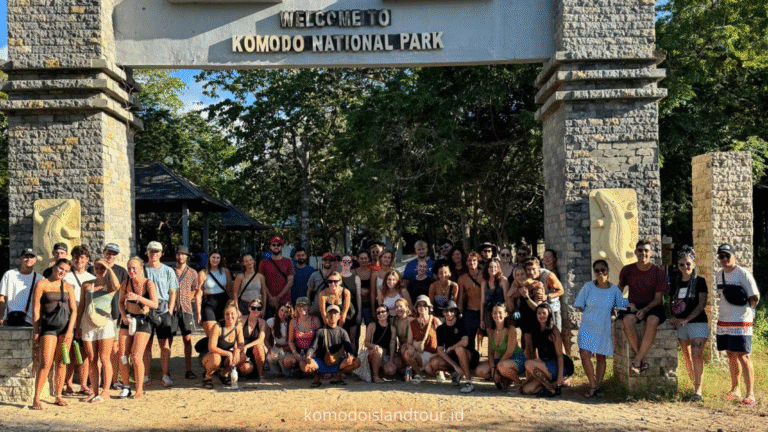
Choose a Licensed Tour Operator—Here’s Why
When embarking on an adventure to Komodo National Park, choosing a licensed tour operator plays a crucial role in ensuring a safe, ethical, and environmentally responsible experience. Licensed operators have acquired permits that are designed to regulate tourism within the park, thereby protecting not only the unique flora and fauna but also the cultural heritage of surrounding communities. These operators are well-versed in the park’s regulations and safety guidelines, significantly reducing the risks associated with exploring such a remote and diverse ecosystem.
Furthermore, licensed tour operators contribute positively to local economies by employing residents and supporting small businesses within the region. This collaboration fosters a sense of community while promoting sustainable tourism practices that benefit both visitors and locals alike. Ethical operators often engage in conservation programs, reinforcing their commitment to preserving the natural beauty and biodiversity of Komodo National Park. By choosing reputed operators, travelers indirectly support initiatives aimed at protecting endangered species, such as the Komodo dragon, and the overall health of the marine environment.
Beyond the aspect of safety and ethics, booking with well-reviewed licensed operators can significantly enhance your experience. They often provide knowledgeable guides who can share insights into the park’s ecosystem, culture, and history. This enriches the visit and helps tourists to appreciate the destination on a deeper level. Visitors can expect well-organized events and a focus on providing an enjoyable and educational experience that aligns with responsible tourism principles.
In conclusion, the decision to book a tour with a licensed operator is fundamental for ensuring safety, promoting ethical practices, and supporting conservation efforts within Komodo National Park. By prioritizing these operators, travelers can enjoy a memorable adventure while directly contributing to the preservation of this extraordinary natural treasure.
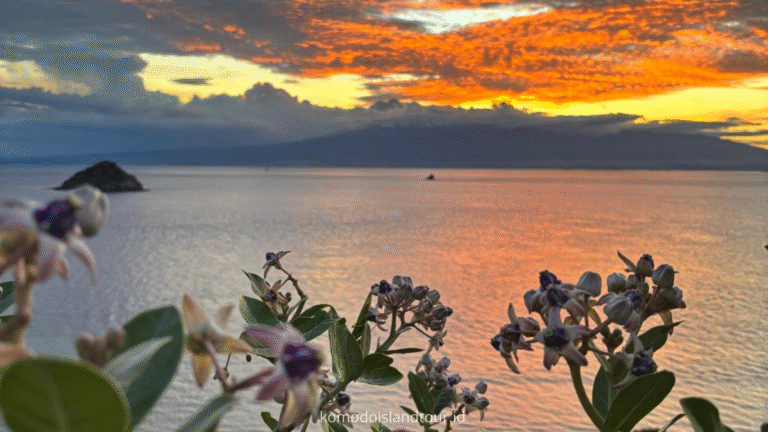

Seasonal Differences: Dry vs Wet Season, Dragon Mating Season, Snorkeling Visibility
Komodo National Park, renowned for its spectacular landscapes and rich biodiversity, exhibits pronounced seasonal variations that significantly influence the experiences of visitors. The park features two main seasons: the dry season, typically from April to December, and the wet season, which spans from January to March. Each season presents unique opportunities and challenges for travelers, particularly in terms of wildlife viewing and snorkeling activities.
Dry Season (April- December)
The dry season is often heralded as the best time to explore Komodo National Park. This period offers clear skies and lower humidity, making it ideal for photography, hiking, and wildlife observation. Visitors can witness the iconic Komodo dragons in their natural habitat, as they are more active during these months. However, it’s essential to note that the dry season also attracts more tourists, leading to crowded trails and hotspots.
Wet Season (January–March)
In contrast, the wet season sees increased rainfall, which may pose difficulties for some activities. Nevertheless, this period revitalizes the park’s flora, enhancing the overall scenery. While visibility for snorkeling can diminish due to rainwater runoff and sediment, certain conditions might still provide excellent underwater experiences. Moreover, this season marks the dragon mating period, which occurs from July to August, offering a rare glimpse into the breeding behaviors of these magnificent reptiles.
In summary, understanding the seasonal differences within Komodo National Park is crucial for planning a visit. The dry season favors outdoor activities, particularly for those interested in photography and dragon sightings, while the wet season, despite its challenges, may offer unique wildlife encounters. Travelers should weigh their interests and prioritize their travel timing to optimize their experience in this stunning natural reserve.


Consider a Liveaboard for a Deeper, More Immersive Experience in Komodo National Park
If you’re looking to fully embrace the natural beauty and biodiversity of Komodo National Park, joining a liveaboard trip may be one of the most rewarding ways to explore the area. Unlike day tours, liveaboards offer the chance to stay aboard a boat for several days, granting you access to more remote and untouched locations that are often missed by short-term visitors. You’ll wake up each morning surrounded by the ocean, far from the crowds, and dive or snorkel in some of the region’s most pristine marine environments. This immersive style of travel allows you to experience the park at a slower, more intimate pace—witnessing glowing sunrises, dining under the stars, and sleeping to the gentle rhythm of the waves. For nature lovers, underwater enthusiasts, and those craving a deeper connection with this incredible destination, a liveaboard offers an unforgettable adventure both above and below the surface.
Experience Sleeping Under the Stars and Waking Up to Stunning Ocean Views
Joining a liveaboard an extended multi-day boat journey is one of the most enriching ways to experience the natural wonders of Komodo National Park. With a liveaboard, you gain access to remote and less visited locations such as Kelor Island and Manjarite Island, where pristine coral reefs, calm waters, and scenic landscapes await. These spots are perfect for snorkeling, diving, or simply relaxing in untouched nature far from the crowds. The real magic happens when night falls you’ll drift to sleep under a canopy of stars and awaken to the golden hues of sunrise stretching across the ocean horizon, offering peace and serenity that land-based accommodations can rarely match.
Understand the Wide Range of Comfort Options Before You Book
Liveaboards come in many forms, and choosing the right one can make or break your trip. Budget-conscious travelers may opt for more basic boats featuring shared dorm-style cabins, communal bathrooms, and simple meals, which still provide a sociable and adventurous atmosphere. On the other end of the spectrum, high end liveaboards offer private cabins, full air-conditioning, ensuite bathrooms, and gourmet cuisine, catering to those who seek comfort and luxury at sea. It is essential to review recent photos, read guest reviews, or even inspect the boat in person if possible. Doing your research ensures that your expectations for space, privacy, and onboard amenities align with what the liveaboard actually provides, allowing you to enjoy the journey to its fullest.
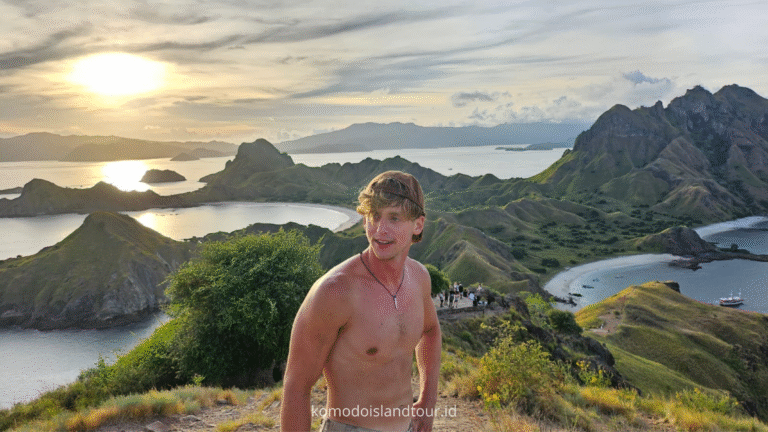
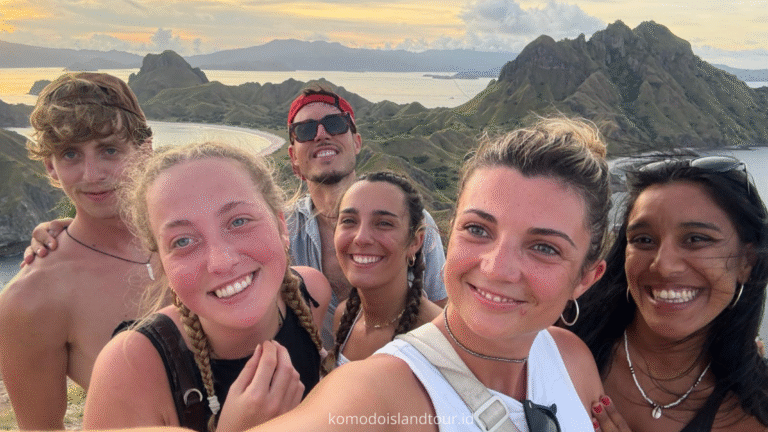
Packing Essentials for Komodo National Park
When planning a trip to the breathtaking Komodo National Park, it is essential to pack wisely to ensure both comfort and environmental responsibility. Among the most crucial items are reef-safe sunscreen, dry bags, and breathable clothing. Each of these essentials plays a significant role in enhancing your experience while minimizing your impact on this stunning marine environment.
Reef-Safe Sunscreen to Protect Marine Life
Reef-safe sunscreen is paramount when visiting Komodo National Park due to its vibrant coral reefs that are home to diverse marine life. Traditional sunscreens often contain harmful chemicals like oxybenzone and octinoxate, which can damage coral reefs and harm aquatic ecosystems. Instead, opt for mineral-based sunscreens made from zinc oxide or titanium dioxide that provide effective protection without posing risks to marine health. This choice not only protects your skin from the sun’s harmful rays but also upholds eco-friendly practices.
Dry Bags to Keep Your Belongings Safe and Dry
Additionally, dry bags are indispensable for any boat trips or water activities in the park. These waterproof bags ensure that your belongings remain safe and dry, protecting them from splashes or sudden downpours. Look for bags that are lightweight and easy to carry, making them suitable for day trips and hikes. Utilizing dry bags can also promote sustainability by reducing the need for single-use plastic bags on your adventure.
Breathable Clothing for Comfort in Hot and Humid Weather
n hot and humid weather, breathable clothing is another essential for comfort. Fabrics that wick moisture away from the skin, such as lightweight synthetics or natural fibers like cotton, will help regulate your body temperature and keep you comfortable throughout your exploration. Additionally, consider packing a light jacket or long sleeves for protection against the sun and unexpected weather changes.
Don’t Forget First-Aid and Hydration Supplies
Other recommended items include a well-equipped first-aid kit and extra water bottles to stay hydrated. Being well-prepared will enhance your overall experience and ensure a safer journey while being mindful of the unique environment of Komodo National Park. If you’re joining a liveaboard, keep in mind that most vessels are equipped with a basic first-aid kit; however, it is still advisable to bring your own personal medications or specific medical supplies that suit your needs.
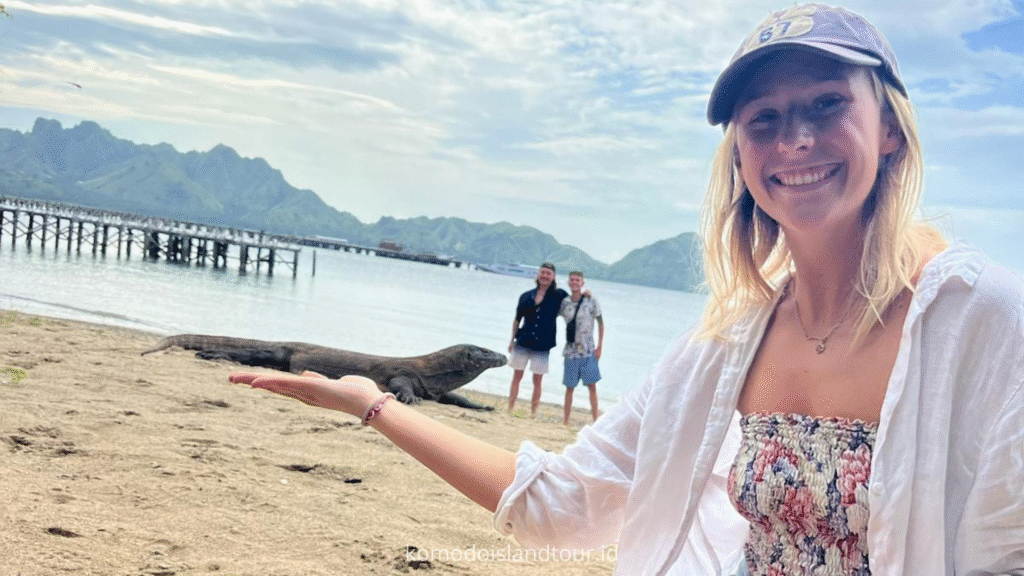

A Note on Conservation and Respect
Visiting Komodo National Park is not just about adventure—it is also about embracing a responsibility to preserve and respect the delicate ecosystem that makes this destination so unique. As one of the world’s most biologically diverse regions and a designated UNESCO World Heritage Site, the park is home to rare species, including the famous Komodo dragons, as well as fragile coral reefs and endemic flora. Every visitor has a role to play in maintaining the park’s ecological integrity, and practicing mindful, respectful behavior is key to sustainable travel.
Do Not Feed or Tease the Dragons
Komodo dragons may seem like slow-moving reptiles, but they are powerful, unpredictable predators. Feeding or teasing them can lead to dangerous encounters and disrupt their natural behavior. This practice is strictly forbidden by park authorities for your safety and for the welfare of the animals. Always maintain a safe distance and follow your guide’s instructions when observing wildlife. Remember, the dragons are not pets or entertainment—they are apex predators in their natural habitat and deserve to be treated with caution and respect.
Stay on Marked Trails
Komodo National Park is filled with natural beauty, but wandering off marked trails can cause significant harm to the local environment. Trampling through vegetation can destroy fragile plant life and disrupt the balance of the ecosystem. It also increases the risk of encountering snakes, aggressive animals, or hazardous terrain. Staying on designated paths ensures your safety while helping to protect the park’s delicate biodiversity. It’s a simple act that has a profound impact on conservation efforts.
Support Sustainable Tourism
Every action counts. Choosing eco-conscious tour operators, using reusable water bottles and containers, and refusing single-use plastics can collectively make a huge difference. Make it your mission to leave no trace carry out everything you bring in, including food wrappers and bottles. Support local businesses that are committed to environmental stewardship, and whenever possible, take part in conservation or educational programs. By being a responsible traveler, you’re not just enjoying the wonders of Komodo you’re actively contributing to their preservation for generations to come.
Conclusion: Know Before You Go—Then Let It Surprise You
Komodo National Park is not just a destination it’s a raw, untamed experience that can shift your perspective and leave a lasting imprint on your soul. It’s one of the few remaining places on Earth where the wild still reigns, where nature’s rhythms beat louder than the hum of modern life. The landscapes, the wildlife, the sense of isolation everything about Komodo is designed to make you feel both small and completely alive. But to truly appreciate it, you must come prepared not just with gear, but with the right mindset.
Understanding the practical realities like the scorching heat, basic facilities, rough seas, and long treks is essential. Choosing a reputable, licensed tour operator can also mean the difference between a frustrating journey and one filled with insight, safety, and meaningful connections with local culture and nature. And just as importantly, respecting the park’s fragile ecosystem and the traditions of the communities who call this region home ensures that your presence contributes rather than detracts.
Komodo National Park is a place that demands humility. It’s not tailored to convenience, but it rewards those who approach it with curiosity, resilience, and care. It’s easy to get caught up in picture-perfect shots of pink beaches and dragon selfies but the real gift of Komodo is how it pulls you out of your comfort zone and shows you something deeper: a raw connection to the Earth, a quieter sense of awe, and perhaps even a stronger understanding of yourself.
So pack smart, stay flexible, and be open to the unexpected. Let Komodo challenge you, delight you, and, in the most beautiful way possible, surprise you.
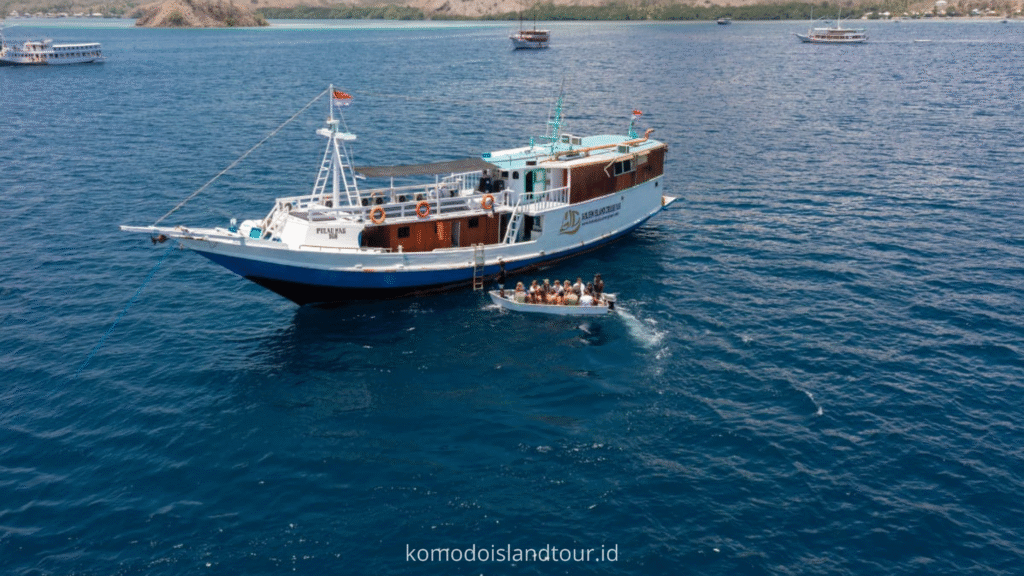
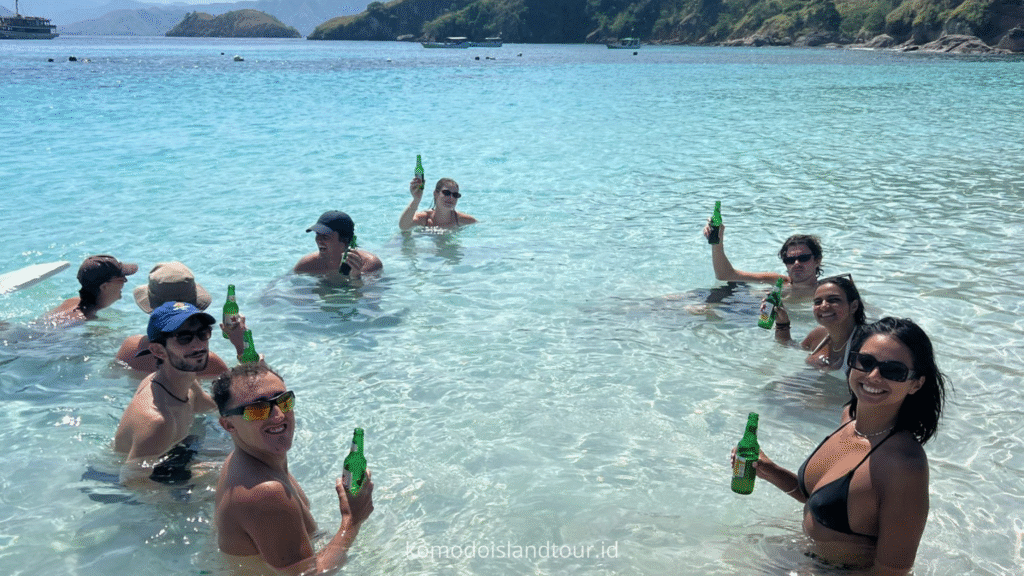
Ready to Begin Your Journey? Choose Komodo Island Tour Indonesia
If you’re ready to explore the raw beauty of Komodo National Park with expert guidance, there’s no better choice than Komodo Island Tour Indonesia. With years of experience, licensed local guides, and a deep commitment to sustainability and authentic travel, we offer personalized trips that go beyond the typical tourist route. Whether you’re dreaming of trekking with Komodo dragons, snorkeling vibrant reefs, or sailing across turquoise waters, we’ll help craft the perfect itinerary tailored to your adventure style. Don’t just visit Komodo—experience it fully, safely, and meaningfully. Book your trip today with Komodo Island Tour Indonesia and let the journey of a lifetime begin!
